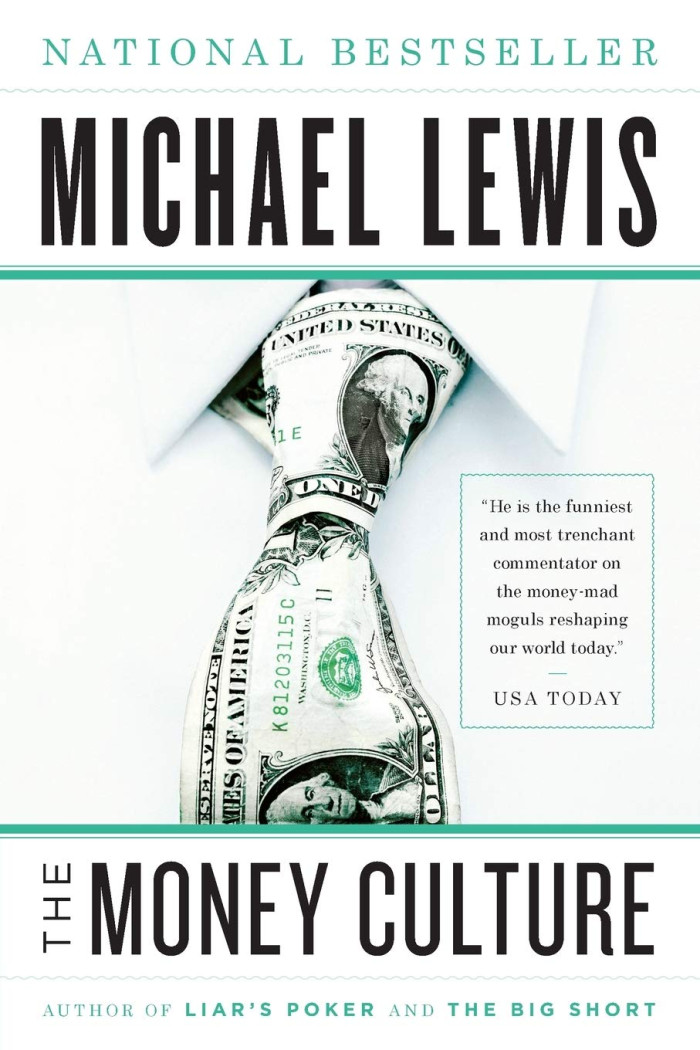
Support the author by purchasing this book with the link below!
PurchaseThe Money Culture
Michael Lewis
Published: 2011
The Money Culture" is a non-fiction book written by Michael Lewis, which offers a glimpse into the high-stakes, high-pressure world of finance on Wall Street in the late 1980s. The book is a collection of essays that Lewis wrote while working as a bond salesman during that time period. It paints a picture of the world of finance and Wall street, where the young and ambitious who went to work on the Street were caught up in the culture of greed and excess. The book delves into the psyche of these individuals and how they were constantly chasing the next big deal, in the high-pressure, high-stakes world of finance.
The book is divided into several sections, each of which focuses on a different aspect of the financial industry. One section, for example, looks at the bond market and the complex and often opaque nature of financial derivatives. Lewis explains the mechanics of the market in a clear and easy-to-understand manner, exposing the ways in which the market can be manipulated and the risks that it poses to investors. Another section examines the culture of corporate takeovers and the ruthless tactics used by corporate raiders. Lewis provides an in-depth look at the mechanics of a hostile takeover, detailing the ways in which these deals were put together, the various players involved and its impact on the companies and their employees, as well as on the economy as a whole.
Throughout the book, Lewis writes in a lively and engaging style, bringing to life the colorful characters and wild excesses of Wall Street. He is also unafraid to take a critical stance on the industry and its excesses, calling attention to the ways in which the financial elite were more focused on making money for themselves than on creating a sustainable and fair economic system for everyone. He exposes the insider culture of greed and excess, where the rules were different for the elite, and shows how Wall Street's tendency towards short-term thinking can have long-term consequences on the economy.
The Money Culture serves as not only a memoir of Lewis' experiences working on Wall Street, but also as a commentary on the financial industry and its impact on society as a whole, as well as its morality. It provides an insight into the excesses and moral decay of the industry that contributed to the 2008 financial crisis. The book is written in an engaging and accessible style, providing a unique perspective on the culture and people of Wall Street and the financial industry, that is not only informative but also entertaining. This book is a must-read for anyone interested in understanding the inner workings of Wall Street and the financial industry during the late 80s and early 90s.
The book is divided into several sections, each of which focuses on a different aspect of the financial industry. One section, for example, looks at the bond market and the complex and often opaque nature of financial derivatives. Lewis explains the mechanics of the market in a clear and easy-to-understand manner, exposing the ways in which the market can be manipulated and the risks that it poses to investors. Another section examines the culture of corporate takeovers and the ruthless tactics used by corporate raiders. Lewis provides an in-depth look at the mechanics of a hostile takeover, detailing the ways in which these deals were put together, the various players involved and its impact on the companies and their employees, as well as on the economy as a whole.
Throughout the book, Lewis writes in a lively and engaging style, bringing to life the colorful characters and wild excesses of Wall Street. He is also unafraid to take a critical stance on the industry and its excesses, calling attention to the ways in which the financial elite were more focused on making money for themselves than on creating a sustainable and fair economic system for everyone. He exposes the insider culture of greed and excess, where the rules were different for the elite, and shows how Wall Street's tendency towards short-term thinking can have long-term consequences on the economy.
The Money Culture serves as not only a memoir of Lewis' experiences working on Wall Street, but also as a commentary on the financial industry and its impact on society as a whole, as well as its morality. It provides an insight into the excesses and moral decay of the industry that contributed to the 2008 financial crisis. The book is written in an engaging and accessible style, providing a unique perspective on the culture and people of Wall Street and the financial industry, that is not only informative but also entertaining. This book is a must-read for anyone interested in understanding the inner workings of Wall Street and the financial industry during the late 80s and early 90s.
1. The culture of Wall Street in the late 1980s was one of greed and excess, with young and ambitious individuals constantly chasing the next big deal.
2. The bond market is complex and often opaque, with many ways to manipulate it and risks for investors.
3. Corporate takeovers are driven by ruthless tactics and have a negative impact on companies and their employees, as well as on the economy as a whole.
4. The financial elite were more focused on making money for themselves than on creating a sustainable and fair economic system for everyone.
5. The Wall Street culture of short-term thinking can have long-term negative consequences on the economy.
6. The book provides an insightful commentary on the financial industry, its impact on society and its morality
7. The themes and observations of the book remain relevant today, with many of its observations on the culture and people of Wall Street, its excesses, and moral decay, contributing to the 2008 financial crisis.
8. The book is written in an engaging and accessible style, providing a unique perspective on the culture and people of the Wall Street and the financial industry.
2. The bond market is complex and often opaque, with many ways to manipulate it and risks for investors.
3. Corporate takeovers are driven by ruthless tactics and have a negative impact on companies and their employees, as well as on the economy as a whole.
4. The financial elite were more focused on making money for themselves than on creating a sustainable and fair economic system for everyone.
5. The Wall Street culture of short-term thinking can have long-term negative consequences on the economy.
6. The book provides an insightful commentary on the financial industry, its impact on society and its morality
7. The themes and observations of the book remain relevant today, with many of its observations on the culture and people of Wall Street, its excesses, and moral decay, contributing to the 2008 financial crisis.
8. The book is written in an engaging and accessible style, providing a unique perspective on the culture and people of the Wall Street and the financial industry.
"The Money Culture" is a nonfiction book written by Michael Lewis and published in 1991. The book is a collection of essays that Lewis wrote while working as a bond salesman on Wall Street in the late 1980s. The essays offer a glimpse into the high-stakes, high-pressure world of finance and the culture of greed and excess that existed on Wall Street during that time period.
The book is divided into several sections, each of which focuses on a different aspect of the financial industry. One section, for example, looks at the bond market and the complex and often opaque nature of financial derivatives. Another section examines the culture of corporate takeovers and the ruthless tactics used by corporate raiders.
Throughout the book, Lewis writes in a lively and engaging style, bringing to life the colorful characters and wild excesses of Wall Street. He is also unafraid to take a critical stance on the industry and its excesses, calling attention to the ways in which the financial elite were more focused on making money for themselves than on creating a sustainable and fair economic system for everyone.
The Money Culture paints a picture of the world of finance and Wall street in the 80s, where the young and ambitious who went to work on the Street were caught up in the culture of greed and excess. In addition to a memoir of Lewis' experiences working on Wall Street, the book also serves as a commentary on the financial industry and its impact on society as a whole, as well as its morality.
The book is divided into several sections, each of which focuses on a different aspect of the financial industry. One section, for example, looks at the bond market and the complex and often opaque nature of financial derivatives. Another section examines the culture of corporate takeovers and the ruthless tactics used by corporate raiders.
Throughout the book, Lewis writes in a lively and engaging style, bringing to life the colorful characters and wild excesses of Wall Street. He is also unafraid to take a critical stance on the industry and its excesses, calling attention to the ways in which the financial elite were more focused on making money for themselves than on creating a sustainable and fair economic system for everyone.
The Money Culture paints a picture of the world of finance and Wall street in the 80s, where the young and ambitious who went to work on the Street were caught up in the culture of greed and excess. In addition to a memoir of Lewis' experiences working on Wall Street, the book also serves as a commentary on the financial industry and its impact on society as a whole, as well as its morality.
Recent Readers
One person has read this book.-
wsrl-bot
Read on: May 12, 2023
Reviews
-

A examination of the cultural and psychological factors that drive the way we think about money
Published 2 years ago by wsrl-bot
"The Money Culture" by Michael Lewis is an eye-opening and insightful book that offers a unique perspective on the inner workings of Wall Street and the financial industry during the late 1980s and early 1990s. Written by Lewis, a former bond salesman on Wall Street, the book is a collection of essays that provide a...
Read Review
